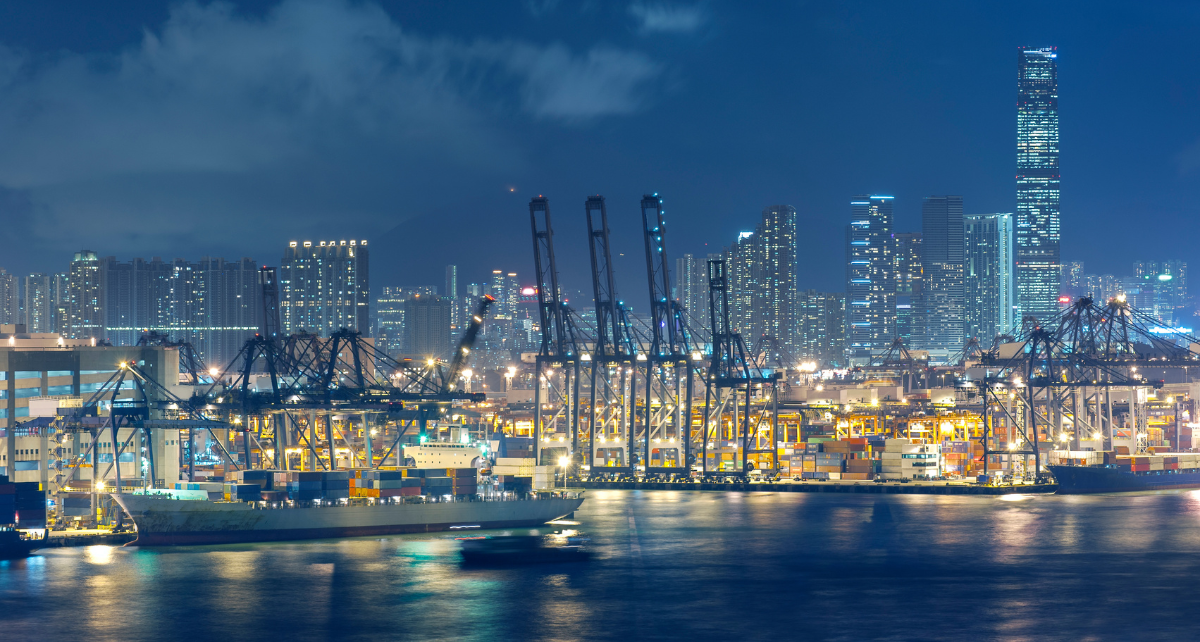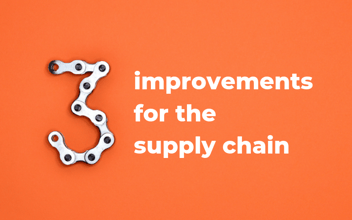Best Advice on How to Manage a Transhipment
Transhipment Management
While it is true that goods manufactured in one country can be sold anywhere in the world, there are some ports that do not have a direct connection. Shipping orders by air may be too expensive while road/rail routes may be too slow. The alternative in such cases is to tranship containers. As global trade has grown, so has the importance of transhipments in the global supply chain.
As you would assume, the number of players involved in transhipped containers is much higher vis a vis direct shipment. There are additional elements of risk that make managing shipment schedules and timelines more complex. Planning becomes all the more important. In this article, we tell you all about transhipments, how to compare direct shipping and transhipment options and how to manage them.
What is a Transhipment?
Transhipment refers to shipping cargo from one location to another via a third port where it is off-loaded from one vessel and loaded onto another.
For example, there is no direct sea route connecting Manila in the Philippines and Durban in South Africa. Cargo being transported between these ports must be shipped in two phases. Vessel A first takes the containers from Manila to a transhipment port like Singapore. Here it is unloaded and reloaded onto vessel B. Vessel B will then transport the cargo from Singapore to Durban.
It is important to note that a change in transportation modes is not categorized as transhipment. For example, the movement of cargo from port A to port B via one ship and then to its final destination by truck is considered a direct shipment.
Does my Cargo need to be Transhipped?
As mentioned above, one of the most common reasons for transhipment is the absence of a direct shipping route between the origin and destination ports. No shipping line has a direct connection to all ports around the world. Services are typically segregated into trade lanes for easier management.
Another reason cargo may need to be transhipped is if it is being consolidated, i.e., smaller shipments are being combined into a large shipment or deconsolidated, i.e., larger shipments from the origin port need to be divided into smaller shipments.
Shippers may also choose to tranship cargo to evade trade restrictions. For example, US importers for Chinese goods may route cargo through Vietnam or other Asian ports.
On occasion, cargo may also need to be transhipped if the intended destination port cannot accommodate big vessels. Larger vessels are cost-effective for longer distances but these vessels can dock only at ports with a certain minimum depth.
Pros and Cons of Transhipments
Transhipment has benefits over direct shipping but it may be simultaneously fraught with risks. These pros and cons must be recognized and weighed before proceeding with either option.
Transhipment is often budget-friendlier
In cases where there is no direct shipping route between the cargo origin and destination ports, transhipment may be more affordable as compared to shipping the cargo by air. In certain cases, transhipment may be the cheaper option even when direct shipping routes are available. This may be seen along routes that have a high demand.
That said, there may be a tradeoff in terms of additional port charges, stevedoring charges etc. that affect the total cost. Sometimes, the forwarder’s service fees can exceed the price difference for shipping cargo by air. Thus, transhipping cannot be assumed as the universally cheaper option.
Transhipment is slower
When compared to direct shipping, the transhipping process has many more steps. An easy way to understand this would be to compare transhipping with taking connecting flights while traveling.
You need to deplane, wait for your connecting flight, go through security checks again and finally board the second aircraft that will take you to your destination.
Similarly, cargo must be unloaded from the first vessel and then loaded onto the second vessel. The additional unloading and loading is time-consuming. Cargo may need to wait at the transhipping port before it can be loaded onto the second vessel. Direct shipping is the faster option.
Another reason why transhipping may be slower than direct shipping is because the cargo may need to cover a longer distance.
Transhipment has higher risks
Transhipment cargo has a much higher risk of delays and damages. If the first vessel reaches the transhipment port late, your cargo may not be in time to be loaded onto the second vessel as planned. Similarly, the second vessel may be delayed. Hence, the wait at this intermediate port may be longer than expected.
Transhipped cargo is also handled by more people. The need for unloading from one vessel to the port and reloading it onto a second vessel increases the risk of damage as well as loss of cargo.
Transhipment involves additional documentation
Though transhipment often takes place in specially designated customs areas to avoid the need for customs duties, there is a lot of additional documentation required. A single transhipped container is counted twice at ports since it is handled twice by container cranes.
In addition to the regular list of documents, you will also need a transhipment permit and have to submit additional details to Customs authorities. Engaged carriers may also require bonds with bank guarantees to confirm that the imported cargo on which duty has not been paid has not been pilfered while it was in transit.
Things to Be Aware of for a Transhipment
Irrespective of your industry, planning is critical to smooth transhipment operations. As with direct shipping, you must partner with a reliable shipping carrier, choose a shipping schedule that matches your delivery schedule and get all your paperwork in order. In addition, here are a few things to be aware of for a transhipment.
Costs must be viewed in totality
It would be naive to assume transhipment is always the cheapest option. In addition to the cost of shipping on both vessels, you must also consider the cost of storing your cargo at the port between the unloading and reloading. There’s also the cost of unloading and reloading that must be added up.
In some instances, direct routes with one ocean carrier can be cheaper than transhipments with other carriers. In other cases, no.
Real-time visibility and control are critical
Seeing how transhipment has a higher risk of delays and exceptions, having real-time visibility over cargo movement is essential. You need to work with a visibility platform like BuyCo. This allows you to see where your cargo is at all times, including when it is in warehouses and get alerts for potential exceptions. In addition, BuyCo also uses AI technology to access accurate ETDs/ATDs and ETAs/ATAs. This intelligence helps proactively avoid delays and meet customer expectations.
Additional documentation is required
Containers that are being transhipped require additional documentation. For example, you will need a transhipment bill of lading. This is a bill of lading issued by the vessel owner who tranships the goods. You may also need additional customs paperwork. If your documentation is not in order, your cargo may be held up at the transhipment port and miss being loaded onto the second vessel.
BuyCo’s document management tool can help here too. It gives you a central platform to exchange documents and ensures that all players have the most updated version of the documents.
How to Avoid a Transhipment and Get a Direct Shipment
Maintaining customer loyalty today is all about offering the best customer experience and in turn, ensuring timely order deliveries. For shippers, this means they must find the fastest way to transport cargo from the origin port to the destination. With regards to this, there is no denying the advantage direct shipping has over transhipments.
To avoid a transhipment, you must be able to search for routes and shipping schedules offered not only by the ocean carrier you have used in the past but by all other carriers that operate for those routes. Searching for shipping schedules on individual websites is slow and inefficient. You need to use BuyCo’s Vessel Search tool.
BuyCo’s Vessel Search tool allows you to view and compare shipping schedules offered by 95% of all ocean carriers. In addition to the expected departure and arrival dates, it also displays information on other factors such as CO2 emissions, costs, allocations and the shipping vessel’s history of on-time deliveries. Thus, it isn’t just a simpler way to see all the options available to you, it also makes comparisons simpler and helps you choose the best route for every trip.
Main Transhipment Ports
Transhipment hubs refer to ports that have direct connections to origin and destination ports. They may serve as hub and spoke ports that connect short-distance feeder lines and long-distance deep-sea lines or as interface points between several long-distance shipping routes. They are typically located at intersection points along the north-south and east-west shipping lanes. Hub and Spoke transhipment ports are the most common and account for 85% of all transhipment activities.
-
Port of Singapore
The port of Singapore is the world’s busiest transhipment port. In 2021, it handled 599 million tonnes of cargo. A ship departs from this port every few minutes.
-
Port of Shanghai
The port of Shanghai handles domestic and international transhipments. In 2021, the port saw container volume cross the 47 million TEU mark. The port is working towards a digital transformation for better operational efficiency that should increase its popularity with shipping lines.
-
Port of Shenzhen
The Shenzhen port is one of the biggest and busiest ports in China and third largest globally in terms of TEU. It is located in the south of the Pearl River Delta. Over 230 international container routes pass through this port.
-
Port of Busan
The port of Busan is South Korea’s first modern international deep-sea port. It is an important transhipment hub that connects 279 container service routes each week. In terms of TEU, it is considered the 7th busiest port in the world.
-
Port of Hong Kong
The transhipment hub in Hong Kong handles over 24 million TEU of ocean freight annually. It is connected to 550 container ports across the world and is known as a centre of excellence for logistics talent development and global leadership in e-logistics.
Tracking Transhipments
Since transhipments involve having your cargo transported on multiple vessels, it leaves more room for exceptions. Either vessel may face technical trouble, weather disturbances, etc. that affect your schedule. Hence, being able to track transhipments is critical. You must know where your cargo is at all times and get timely alerts for exceptions so that you can make changes or inform customers accordingly.
Buyco’s Track and Trace feature gives you complete visibility and control over your entire shipping operation. You can track containers at warehouses as well as while they are in transit on a shipping vessel. If an exception does occur, Buyco offers real-time alerts and updates. This helps you react faster and adapt your transport plan so as to maintain the desired delivery timelines.
Summing it up
While you cannot deny the importance of transhipments when it comes to connecting ports in the global shipping network, transporting cargo via a direct shipping route is always preferable. It is quicker, has a lower risk of delays and damages and is easier to manage.
The key to avoiding transhipments and finding a direct route lies in having easy access to shipping schedules offered by all the different ocean carriers operating between your origin and destination ports. If transhipment is the only viable option, you then need to have clear visibility over your container movement.
Buyco plays an important role in both instances. It simplifies your search for the shortest and most affordable route and schedule while giving you complete visibility and control over every aspect of your shipping operation.


-min.png?width=352&name=Untitled%20design%20(21)-min.png)
